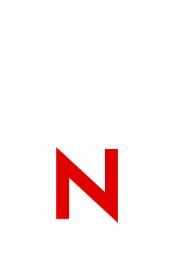|
SCHCMP.EXE
version 1.0 (v4.x and IntranetWare)
Copyright (C) 1997 Novell, Inc.
All Rights Reserved
________________________________________
CONTENTS
________________________________________
I. Abstract
II. Installation Instructions
III. Usage
IV. Product Description
V. Enhancements/Bug Fixes
VI. Known Issues
VII. Frequently Asked Questions
________________________________________
I. ABSTRACT
________________________________________
Schema Compare (SchCmp) compares the schema of two servers.
NOTE: This utility helps system administrators. It is provided free of charge as a courtesy, and therefore, is not a Novell supported product.
________________________________________
II. INSTALLATION INSTRUCTIONS
________________________________________
Copy SCHCMP.EXE to the SYS:\PUBLIC directory on your server.
________________________________________
III. USAGE
________________________________________
Schcmp serverA [serverB] [/C | /A | /S]
Options:
/C List or compare class definitions.
/A List or compare attribute definitions.
/S List or compare syntax definitions.
________________________________________
IV. PRODUCT DESCRIPTION
________________________________________
Schcmp (32-bit) displays the schema of serverA or compares serverA with serverB and displays their differences. serverA and serverB may be a server name, or a server list file(.LST), or a schema reference file(.REF).
Server List File Syntax:
A server list file (.LST) is a text file of server names. A semicolon(;)
may be used to add comments. An example of a .LST file is included with this self-extracting file. NLIST may be used to create a server list file:
NLIST server /n /b > server.lst
This command will list all servers seen on the network and redirect the
information to a file named server.lst. Server.lst must then be edited
to remove everything but the server names (NLIST adds information before and after the list of servers.
Schema Reference File Syntax:
A schema reference file (.REF) is a text file of a schema definition.
A semicolon(;) can be used to add comments. A reference file can most easily be created by listing the schema of a server and redirecting the output to a file.
Schcmp my_server > base.ref
Several reference files are included with this self-extracting file.
________________________________________
V. ENHANCEMENTS/BUG FIXES
________________________________________
- Fixed cosmetic problem with the whirlygig.
- Enhanced error messages to display the NDS -600 errors AND
hex values.
- Enhanced authentication, so you only need to be attached
to a server on the network.
- Enhanced ERRORLEVELs to return 0 if no errors occur and
1 if there are differences. This allows a batch file
to check the ERRORLEVEL (see the included file SAMPLE.BAT)
________________________________________
VI. KNOWN ISSUES
________________________________________
None
________________________________________
VII. FREQUENTLY ASKED QUESTIONS
________________________________________
Q: Why use Schema Compare?
A: Schema Compare has many uses, some of which are:
1) Display a servers' schema.
2) Store a server's schema in a reference file (*.REF). Later
compare the file against the server to detect changes.
3) Compare a server's schema against all other servers in the
tree (*.LST).
4) Compare the schema of a server against a reference file. For
example, how does my server's schema differ from the schema of a
newly installed 4.11 server?
Q: How does Schema Compare differ from Schema Manager?
A: Schema Manager works on a tree level. It assumes the tree is healthy, and therefore, can modify the schema. Schema Compare works on a server level, it makes no assumptions about the tree, and therefore, can NOT modify the schema.
Q: Why do the schema of servers in the same tree differ?
A: A schema is stored on every server. In a healthy tree, all servers have an identical schema. If the schema needs to be extended, such as installing GroupWise 5, the extensions must be added to the server holding the master of the Root partition. This server passes the changes to the rest of the servers in the tree. Schema differences may occur if this synchronization fails. This may happen for many reasons, but the most common reasons are:
1) Servers are down
2) Communication problems between servers
3) Database corruption
Q: Should I use Schema Manager to fix discrepancies between the schema of servers?
A: No. Care should be taken to ensure that all servers are up and
communicating. Time then needs to be given for the synchronization
to occur. If the discrepancies still persist then contact your
dealer/integrator or Novell Technical Support. The schema is a
vital piece of Directory Services. Any changes to the schema may
cause unexpected results.
Products Supported
NetWare 4.11
intraNetWare 4.11
|

